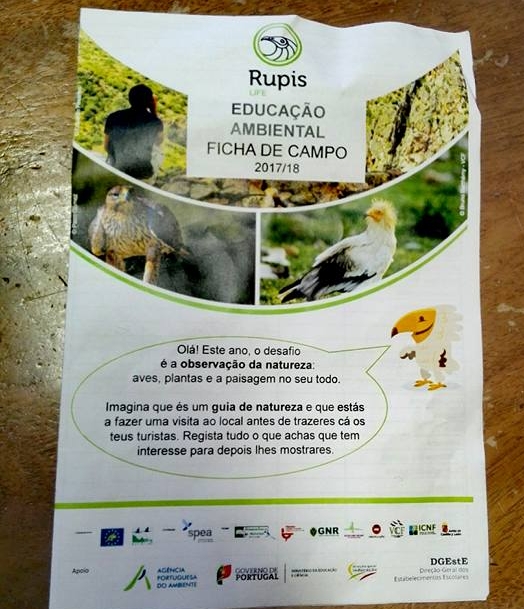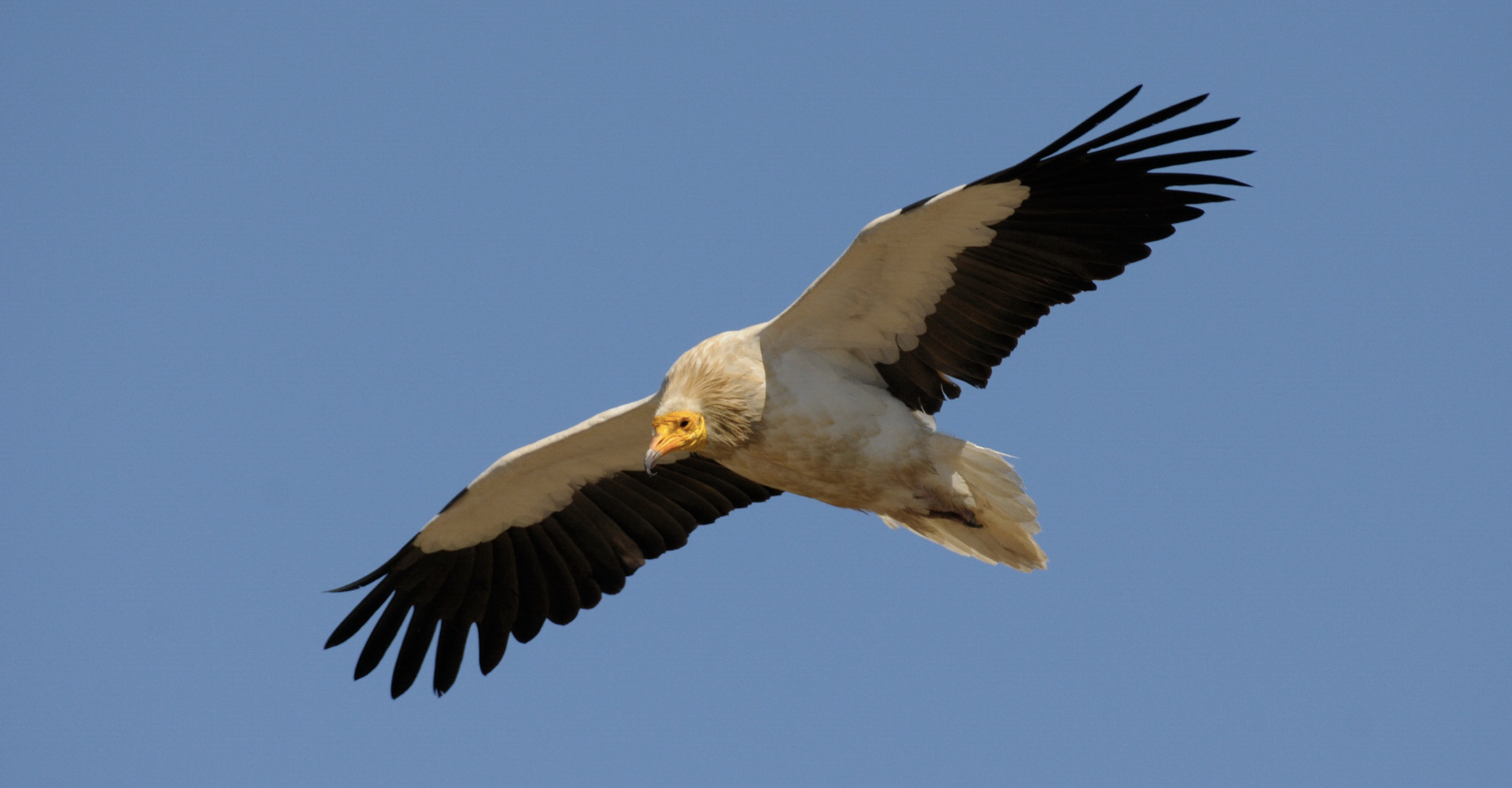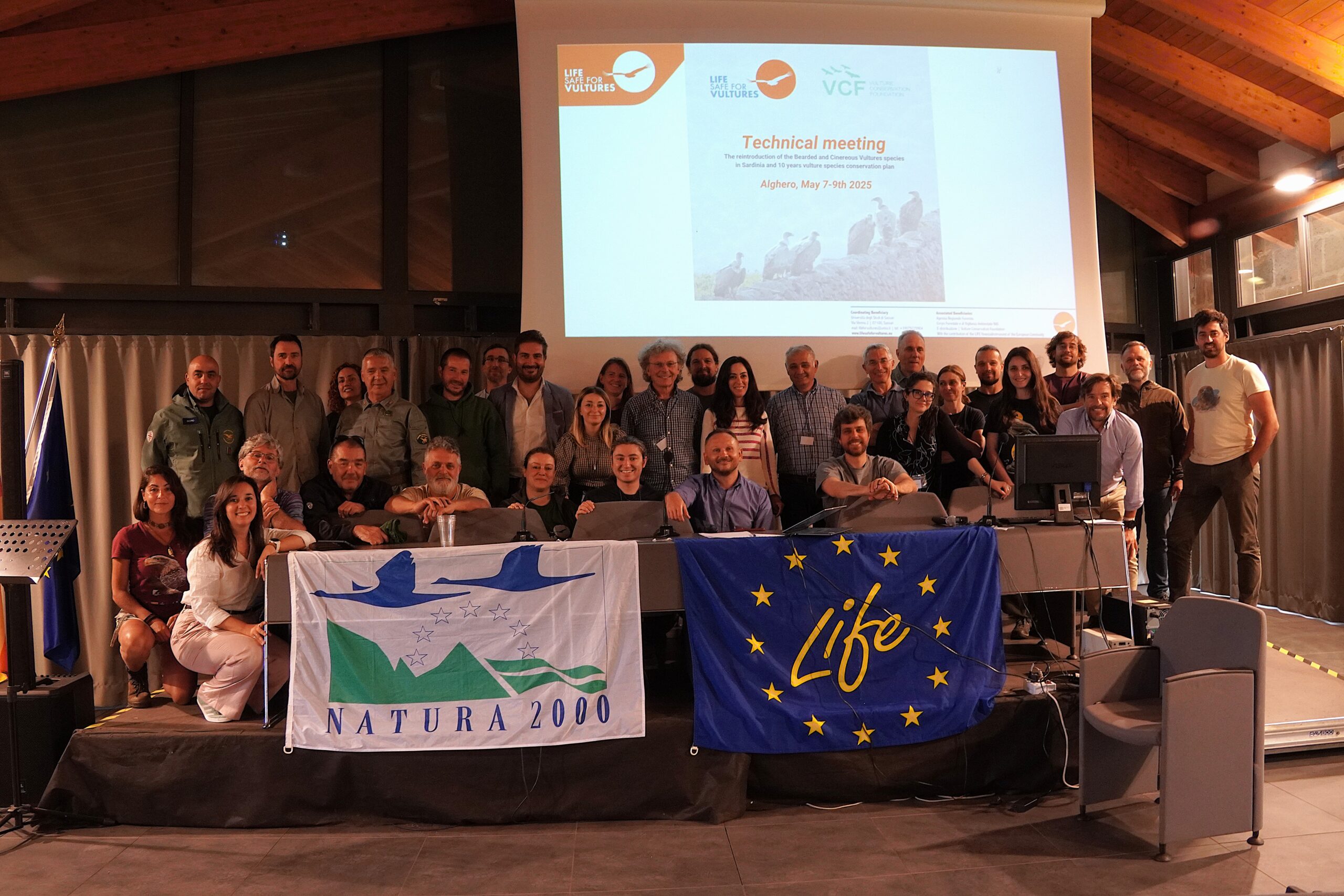
During the month of May, school children from villages in the Northeast corner of Portugal have been invited to go on a field trip to discover the Egyptian vulture, the Bonelli’s eagle and other cliff-breeding species, in the Douro canyon.
During the last two school years, the LIFE Rupis team has travelled through the region, visiting school departments and invading classrooms to introduce children to the species, their habitats and the conservation work which is being accomplished in the field. This year, it is time for the children to visit the birds in the field and to find out more about the project and about what everyone can do to actively protect these species and landscape.
Rupis, the Egyptian vulture mascot, is no stranger to the kids anymore. They also know that there are 5 GPS tagged birds which they can follow on a map and explore their location. After last year’s forest fires, they also found out that the chick of the only Cinereous vulture pair died in the nest, surrounded by flames.
In the field, the school groups are eager to use the binoculars and spot vultures and eagles flying along the cliffs. In Figueira de Castelo Rodrigo and Freixo-de-Espada-à-Cinta, with the help of the project team members from SPEA and ATN, the 3rd and 7th graders were able to spot Egyptian and griffon vultures, but also a cinereous vulture and a bonelli’s eagle. Maybe some imaginary birds, too. On their Rupis field notebook they also registered plant species and made drawings of what they saw, literally on their backyard nature area, the Douro International Natural Park.
You can learn more about the LIFE Rupis Environmental Education and Awareness programme here. Learn more about the Egyptian vulture conservation actions of the LIFE Rupis project also on our website.
And if you are passing by the area, be sure to visit the next local birdwatching fair Observarribas, to take place at Miranda do Douro (25-27 of May), where you can get to know what all partners, including VCF, are accomplishing for the conservation of the Egyptian vulture.
Photos: LIFE Rupis field notebook showing the Rupis Egyptian vulture mascot; drawing which shows a child watering the tree which holds a Cinereous vulture nest; List of species and observations; School group with the SPEA and ATN environmental education team (Photo credits: VCF / ATN)



